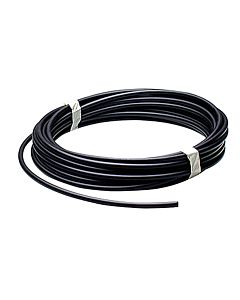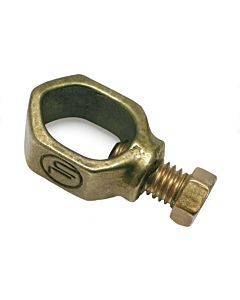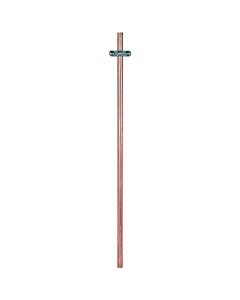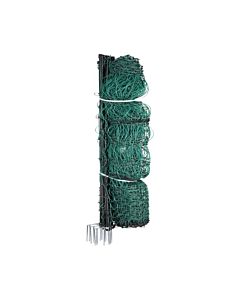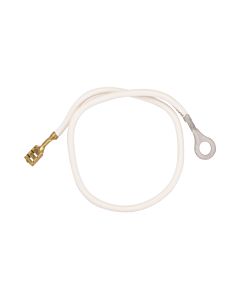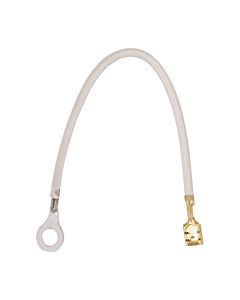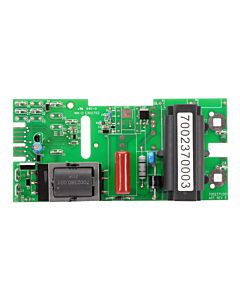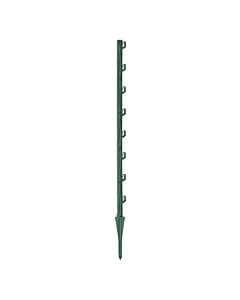Ground Rod Installation
The grounding circuit is a critical component of your electric fence and is essential to its proper functioning. The fence charger, or energizer, is designed to alter the electric charge into a power that is safe for animals and people.
When an animal touches the electrically charged fence wire, the animal feels the electric current as the charge passes through its body. The charge then continues the circuit through the earth to the ground rod and then up the ground wire to the ground terminal of the charger.
If the animal and the ground terminal of the charger are not sufficiently grounded, the path of electric current cannot be completed, and the animal will not feel the shock. Since earth provides half of the electric field circuit, it is crucial to have a properly installed ground circuit.
For example: Birds landing on the wire will not be harmed. Since they are not in contact with the ground as they sit upon the wire, they are not completing the circuit, and therefore they will not receive a shock.
Need help with grounding? Check out our solutions below
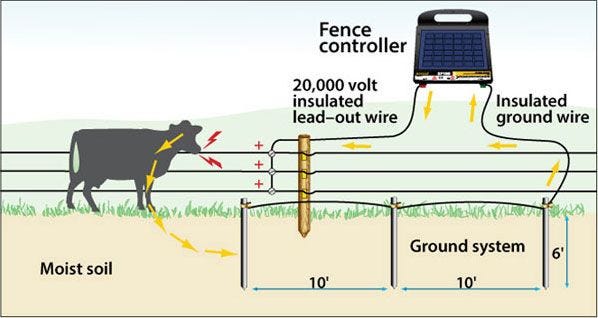
Selecting and Placing Your Grounding Rods
An effective grounding system consists of three 6 to 8 foot grounding rods, ground rod clamps, and 20 KV insulated hook up wire.
Grounding rods may be copper or galvanized. The benefit of copper is that it transports the electrical charge more efficiently than the galvanized rod; however, it can be more expensive. Rebar is typically the least expensive option, it is also the least durable.
The first grounding rod must be driven into the soil within 20 feet of the fence energizer. Additional grounding rods should be spaced 10 feet apart from the previous rod.
For ease of installation, pour water into the entry point when pounding in your ground rods.
A sledge hammer, T-post driver, or hammer drill can be used to install the rods into the soil. Keep in mind that the rods should be driven as deep as possible with only a few inches above ground to clamp on the wire.
Making Ground Rod Connections
Now that your grounding rods are in the soil, it is time to connect them to each other and ultimately to the energizer.
Using a ground rod clamp at each rod, connect the 20 KV insulated hook up wire to each rod in a linear fashion, also known as daisy- chaining. Remember to strip the end of the wire so the metal is exposed when clamping it to the rod in order to establish a connection.
Once all three rods are connected one to another, the wire can be hooked up to the fence energizer. It must go to the ground terminal on the charger. Do not make the mistake of connecting it to the fence wire or fence terminal
Grounding Tips
Sandy, dry, and rocky soils may require additional grounding in the form of a "two-wire system." To learn more about the differences between a “one-wire” and a “two-wire” system, skip to the sections below.
Longer fences or areas where the soil is dry, rocky, or sandy may also require more grounding rods.
Your grounding rod system should not in any way be connected to other utility grounding rods, for example, those used in houses or barns.
Do not install ground rods within 50 feet of a utility ground rod, buried telephone line or buried metal water line, as they may pick up stray voltage..

One-Wire System
When only charged wires run the perimeter of the fence, this is called a one wire system. If you have a small area, with one or two strands of wire, a one wire system is what you should use.
One-wire systems can also be used when adding on to an existing fence. Running a charged strand of wire on the top of a non-electrified fence will keep your livestock from reaching over the fence and damaging it. This method can be used on barbed or woven wire fence as well.
Two-Wire System
A two-wire ground system should be used if there are more than three strands of wire on the fence. The two-stranded system allows the animal to complete the circuit by touching a charged wire and a ground wire at the same time. The strands on the fence must alternate between a ground wire and a charged wire: one charged, one ground, and then charged, etc.
If you have a large area that needs to be fenced in, this system is ideal. It is also great to contain animals with long hair, or wool, and areas with sandy or rocky soil. Grounding this system is simple. The wire from the ground terminal will connect directly to the ground rods and then connect to the ground wires on the fence line. The charged wires are connected to the fence terminal on the charger.

